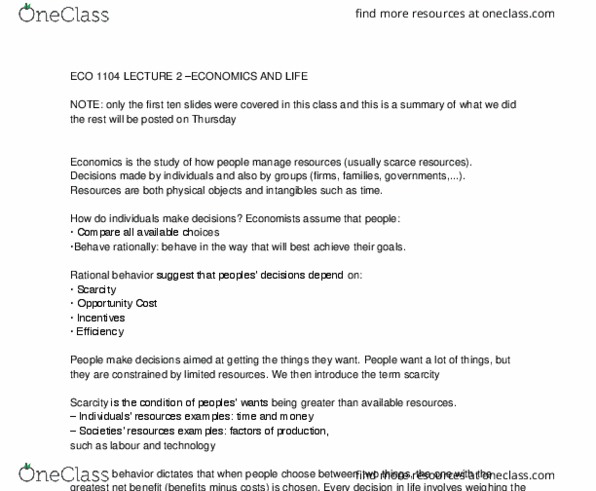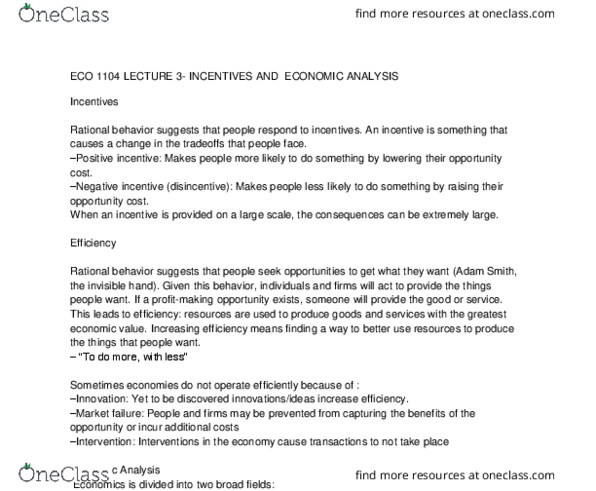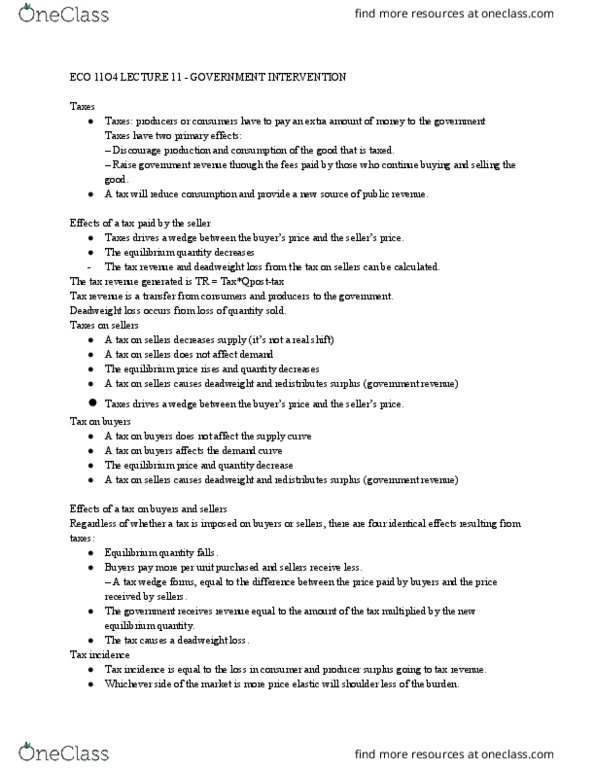ECO 1104 Lecture Notes - Lecture 11: Tax Wedge, Deadweight Loss, Tax Incidence
ECO 1104 verified notes
11/11View all
Document Summary
Taxes: producers or consumers have to pay an extra amount of money to the government. Discourage production and consumption of the good that is taxed. Raise government revenue through the fees paid by those who continue buying and selling the good. A tax will reduce consumption and provide a new source of public revenue. Effects of a tax paid by the seller. The tax revenue and deadweight loss from the tax on sellers can be calculated. The tax revenue generated is tr = tax*qpost-tax. Tax revenue is a transfer from consumers and producers to the government. Deadweight loss occurs from loss of quantity sold. A tax on sellers decreases supply (it"s not a real shift) A tax on sellers does not affect demand. The equilibrium price rises and quantity decreases. Taxes drives a wedge between the buyer"s price and the seller"s price. A tax on buyers does not affect the supply curve. A tax on buyers affects the demand curve.





